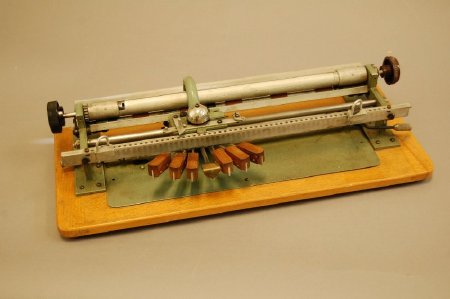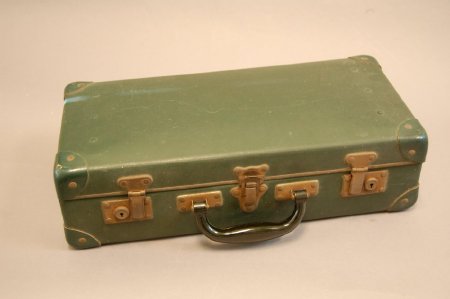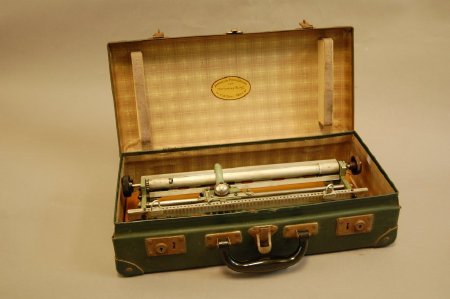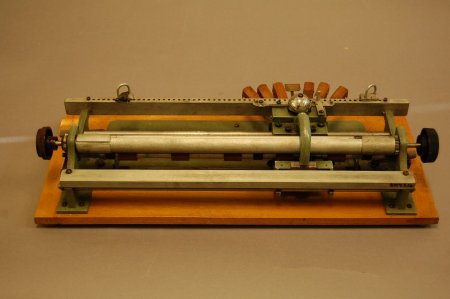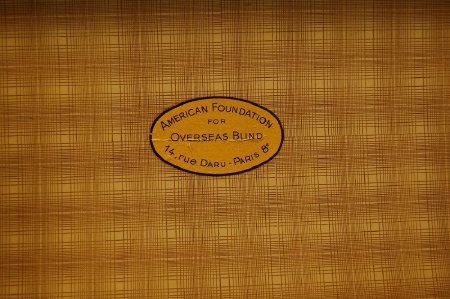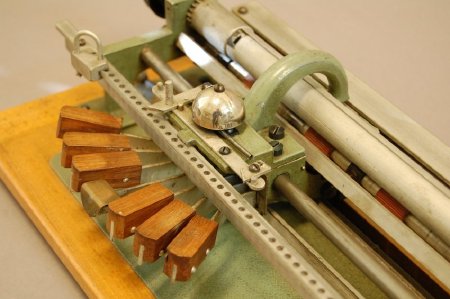Object ID:
2014.5.1
Title:
Jauny Braillewriter
Creator:
American Foundation for Overseas Blind
Description:
(a) Jauny Braillewriter; rectangular wooden base with splined end pieces and raised on wooden feet; green crinkled finish aluminum and steel frame screwed to base; bright steel carriage bar, bright aluminum-faced paper storage roller and back plate; carriage holds keyboard, arching aluminum diebox and chrome carriage return bell; keyboard has six splayed wooden keypads and central brass spacebar on nickeled steel keybars; crude aluminum margin bar on front of writer, with simple u-bolt margin sets; simple line advance lever with knurled handle on lower right; similar knurled backspace and carriage release lever on lower right; paper is stored around the central 3/4" diameter paper roller, secured by a paper clamp on the roller; the secondary paper roller underneath has five red rubber grippers; (b) green faux-leather plastic carrying case; hinged lid; nickel plated steel hardware; green enameled fibreboard reinforced corners; black plastic swivel handle; two lockable latches, central spring latch; lined in brown plaid paper; label inside lid, "American Foundation for Overseas Blind/14 rue Daru Paris 8".
Dimensions:
H-4 W-18.125 D-7.75 inches
Date:
ca. 1946
Made by:
American Foundation for Overseas Blind
Place of Origin:
Paris, France
Provenance:
The American Braille Press was founded in 1915 originally as the British-French-Belgian Permanent Blind War Relief Fund. By 1927, the Press was embossing braille and manufacturing various aids and games from their factory in Paris, France under the leadership of George Raverat. This writer was invented in 1927 at the Press by chief engineer E. Jauny and sold until discontinued in 1935, after the introduction of the AFB Foundation Writer. Its two unique features are the 14" width of its carriage--wider than most braillewriters--and its carriage mounted keyboard and diebox. After the Press was reorganized as the American Foundation for Overseas Blind in 1945-46, in an atmosphere of shortage of almost every kind of equipment, the Jauny was briefly reintroduced. It appeared in two forms, a black version similar to the original 30s machine, and this green version. The green version was cruder, its bell was moved to the top of the diebox, levers and margin sets appear hand machined, and the overall impression is of a machine finished from leftover parts.
Credit Line:
Museum Purchase, 2014.5.
